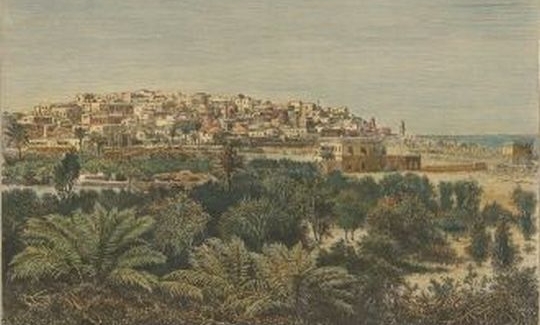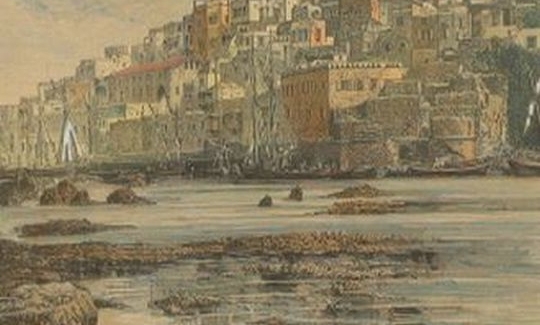Jaffa in the Printmaker's Art - 17th-19th Centuries
Saturday, 21.03.15
Saturday, 18.07.15
:
Avshalom Zemer
More info:
04-6030800Jaffa is one of the most ancient cities in Eretz-Israel. The origin of the name is obscure. According to one authority it is so named because ‘yafa' means ‘beautiful' in Hebrew, but according to another it was named for Japhet, son of Noah, who rebuilt it after the Flood and settled there. As of the mid-2nd millennium BCE, the city is mentioned in documents from Egypt, Assyria, and Greece, and in Latin and Arabic texts from Crusader and later times.
Old Jaffa was built on a cliff projecting into the sea, at the foot of which was the ancient port. It thus served as an anchorage for ships, as a station on one of the branches of the ancient "Sea Road" and, in various periods, as the port for cities such as Jerusalem, Hebron, and Ramallah. The capacity of the harbour, which is a kind of basin, was modified according to the size of the vessels that entered it.
From the second half of the 17th century and throughout the 18th century, Jaffa was a small town. Exports were mainly of cotton and soap, and imports consisted largely of rice and sugar. There were also hostels in the port for Christian pilgrims.
In 1775 Mohammed Bey, commanding officer of Ali Bey, the Egyptian governor who rebelled against Turkish rule, captured the city and massacred the inhabitants. Napoleon's conquest in 1799 created havoc and destruction, and gave rise to an outbreak of plague due to the many dead that were left unburied. After the French army withdrew, the city fell into the hands of Ahmad al-Jazzar, Governor of Acre - the capital city at that time. In 1803, Sir Sydney Smith, Commander of the British Fleet, repaired the city walls. He had been present during Napoleon's siege of Acre. When Muhammad "Abu-Nabut" ("Father of the cudgel") (1807-1819) governed Jaffa for al-Jazzar, the sea-wall and the port were reconstructed, a khan (caravanserai) was built for pilgrims, as were a market and sabil (fountain) by the city gate. As a result, the population and the number of pilgrims increased, and trading flourished. Expansion continued under Egyptian rule (1831-1840), and Egyptian fellahin settled in the environs of the town, working in the orange groves and orchards. Apart from the citrus fruit that was sent overseas, in the area around Jaffa they grew lemons, pomegranates, figs, bananas, peaches, almonds, dates, and watermelon. Agricultural produce including dried fruit, sesame seed, olive-oil, wheat, citrus and raw cotton was exported, as well as olive-oil soap. Towards the end of the century, citrus became the main export commodity. Imports from Europe included iron, cloth, timber, and refined oil. Exports increased at the end of the 1840s, when steamships began to ply the Eastern Mediterranean Basin.
As the population grew, so too did the overcrowding inside the city walls. At the end of the 19th century, the Ottoman Government allowed the walls to be razed throughout the Empire, and settlements extended beyond the city limits. However, by mid-19th century groups of Christians and of Jews were already settled around Jaffa, contributing to the economic and industrial development of the city.
As these villages expanded, Jaffa became their economic and public centre. Consulates were opened, followed by branches of European banks and trading companies. Jaffa was the district headquarters, governed by the Turkish Kaimakam (District Controller). A carriageway, railway line and train service from Jaffa to Jerusalem, constructed in 1892, added a further dimension to the established city.
The exhibition presents 17th-19th century prints from the collection of the National Maritime Museum. It includes works by renowned artists such as de Bruyn, Bartlett, Roberts, Turner, and Fenn, most of them seascapes.



